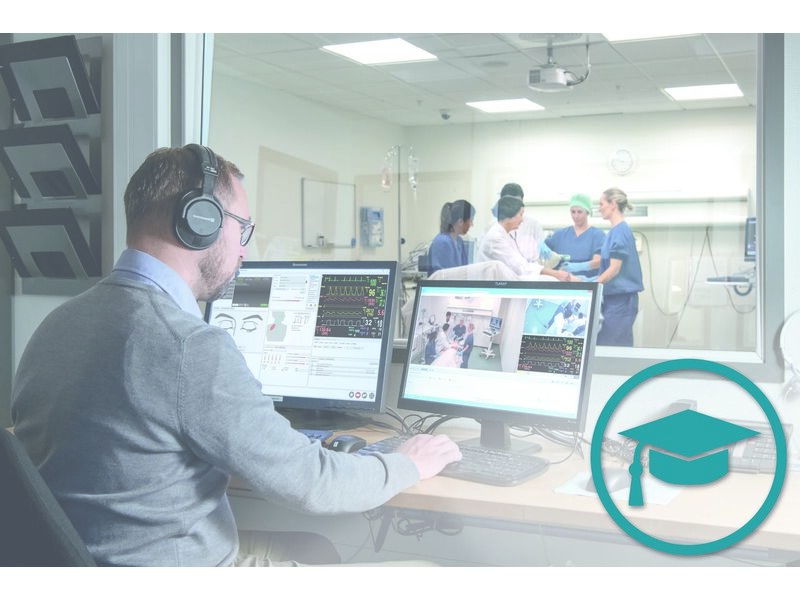
Sim-Based Institutional Interprof Education- NLN
- This product is not available to purchase online
- Request more information
Sign in to add this item to your favourites list.
Overview
Interprofessional collaborative practice is vital to providing safe, patient-centered care of the highest quality (IPEC, 2011). Presently, many health professions students are provided educational content only in their discipline. Upon graduation they are expected to collaborate with other health professionals despite limited prior contact to students of other professions.
Interprofessional education (IPE) should be deliberate and not left to chance. Students of different health care professions need opportunities to learn together, to learn about and from each other in order to provide the best patient care possible. Simulation is an excellent venue to provide opportunities for interprofessional learners to develop, practice, and refine interprofessional skills such as communication, collaboration and teamwork within the context of a patient care scenario.
This course is designed to help faculty learn the basic terminology of IPE, the specific competency domains that can be addressed in IPE using simulation, and strategies for design, implementation, and evaluation of simulation-based IPE in educational or practice settings.
Objectives- Distinguish between the various iterations of interdisciplinary/interprofessional health care education and practice terminology.
- Apply Interprofessional Collaborative Practice (IPC) competency domains in a simulation activity: Values/Ethics for Interprofessional Practice, Roles/Responsibilities, Interprofessional Communication, Teams and Teamwork.
- Describe strategies in interprofessional education (IPE) using simulation to prepare health care learners to deliberately collaborate in their practice setting.
- Discuss the importance of faculty development and reflect on strategies to accomplish this in your setting.
- Discuss select challenges to IPE and opportunities for successful solutions.
About the Authors Mary Anna Gordon, DNP, RN
Assistant Professor/Simulation Faculty
Simulation and Clinical Learning Center
Oregon Health & Science University School of Nursing
Dr. Gordon is an assistant clinical professor at Oregon Health & Science University (OHSU) School of Nursing's Simulation and Clinical Learning Center. Since 2007, she has been teaching using simulation as an instructional strategy in all of the nursing courses in the school's integrated curriculum. Dr. Gordon recently completed her doctor of nursing practice degree with a focus on nursing and interprofessional education and the use of simulation to enhance interprofessional education. She has developed interprofessional pilot courses for students in the nursing and medicine programs, and has served on the Simulated Code Interdisciplinary Team Training Committee at the university hospital, providing the hospital's code team opportunities to practice advanced cardiac life support and crisis resource management skills. She also participates in the intensive care nurses' orientation program, the anesthesia and perioperative medicine residents' simulation programs, and the Emergency Department's RN and MD residents' simulation programs.
Dr. Gordon has presented at international conferences on the subject of interprofessional simulation, and teaches courses nationally about how to teach clinical judgment through simulation. She has recently joined the editorial review board for the Clinical Simulation in Nursing Journal.
Carol F. Durham, EdD, MSN, RN, ANEFClinical Professor
Director, Education-Innovation-Simulation Learning Environment
School of Nursing
<